From the fashion luxury that originally imitated traditional watches, to now focusing on sports and health monitoring, the sense of existence of smart watches in our daily life is getting stronger and stronger.
Ten years after entering the smart phone market, OPPO also released its first smart watch product, OPPO Watch. Although it was a bit late, it did not prevent it from succeeding. It relied on the more mature craftsmanship and technology at the moment. Distance from other similar products.

It does n’t chase large and full functions, but chooses to focus precisely on the pain points that “prevent watches from becoming a public device”, which also makes it have several major features: such as the use of rare hyperboloid glass It is equipped with a dual-chip architecture that can balance performance and power consumption, and is suitable for more customized watch systems.
And it does not forget to inherit the glorious tradition, it is the only smart watch on the market that supports fast charging.
How did these designs evolve from idea to product? Recently, we interviewed Xu Yan, OPPO’s director of wearable product planning, and talked about the development history of OPPO Watch.
OPPO wanted to be a hyperboloid watch from the beginning
According to Xu Yan, OPPO has been paying attention to smart hardware categories for a long time, but the actual establishment of smart watches began in early 2019.
At that time, the team believed that key technologies such as sensors, chips, and charging had all developed to a mature stage and couldIt carries the products defined by OPPO, so it was decided to put the idea to the ground and formally form a team for research and development.
“A few years ago, when OPPO researched the Internet of Things and 5G, it was believed that the entire industry or product will develop in the direction of integration of all things; in addition, we also felt that OPPO Watch would become the entire OPPO Internet of Things One of the core entrances of ecology, which is one of the reasons we decided to make watches. “
What to do with the appearance of the watch is the first problem facing OPPO. Prior to this, most smart watches used flat square screens, but OPPO has ingeniously introduced hyperboloids, hoping to use this uniqueness to impress those who are looking for beauty.
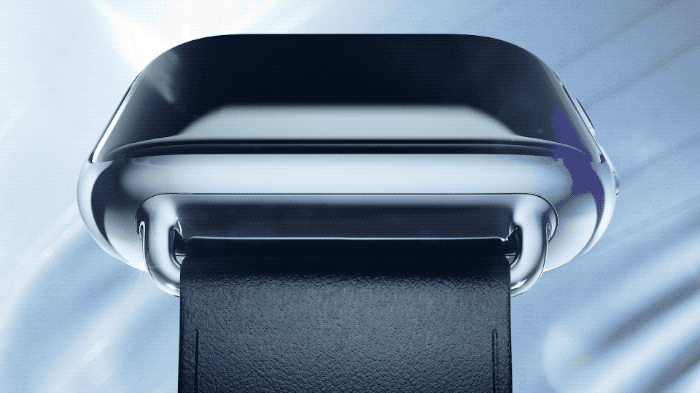
“Since the birth of traditional watches, one of the most important attributes is decoration. Everyone’s requirements must include good-looking. We also hope that the things you wear will have a warm and jade-like feel. , Both comfortable and beautiful, so we chose a round 3D surface structure on both the front and the back. “
It’s just that it’s much harder to make a hyperboloid on a watch, especially the screen. Limited to the small volume of the watch itself, the glass cover can only be made into a small piece, which requires further improvement of the original bending process.
Trying a new process was a huge challenge for both labor and time costs, which was also the problem that the OPPO team was facing at the time.
“Oppo itself has very high requirements for glass cover when developing mobile phones. For example, the screen must not be scratched, and there must be no gap between the screen and the cover. These requirements are also combined. Inherited to watch products. “
Also, since the lineNo one in the industry has previously made hyperboloids on watches, and there are not many factories willing to take the risk of small screen hyperboloid production.
Before the trial production, OPPO also led a team to find upstream suppliers to communicate face-to-face. In the end, only two factories were willing to give it a try. This may also be the possibility that OPPO can put ideas into practice.
But when the trial production phase really entered, OPPO did meet the challenge from good yield. At the worst time, there may be only a few covers in a day to meet the requirements of the finished product. Through long ramp-up of production capacity and process improvement, the need for mass production was finally reached.

The challenge brought by hyperbola is not only the difficulty of production itself, but also the realization of some key functions. For example, we may not pay much attention to daily life, but in actual use, it is very important to waterproof.
The OPPO Watch, which is the core sport, naturally wants to reach 5ATM, which is a 50-meter waterproof level that can be used for swimming, but the appearance of the hyperboloid screen has increased the waterproof surface of the OPPO Watch to 22, so OPPO only It can be solved by adjusting the width, height and thickness of the glue surface of the watch.
If the use of hyperboloids is OPPO ’s “selfishness”, then in pursuit of convenience, OPPO Watch also has some unique small designs.

Many smart watch users may have the need to change the strap for different scenarios. For example, in business occasions, they tend to choose leather or steel straps. When they exercise, they will wear silicone straps to prevent water and sweat. Products are often time-consuming and labor-intensive when disassembling and disassembling a frequent operation.
The OPPO design team proposes a “one-button quick release” solution to this point: press the lock and then gently pull it out, the strap pops out lightly, and it is effortless to install, right Press the quasi-clip, and with a crisp click, the strap is tightly combined with the head.
Xu Yi said that this was the result of dozens of prototype designs and months of exploration, and inspiration was occasionally obtained during a walk.
“When the project started, we first selected 10 strap removal solutions, but the final model test failed. Due to tight time, the product manager still wanted to provide consumers with an ideal way to disassemble , And finally tried again to achieve the current effect. “
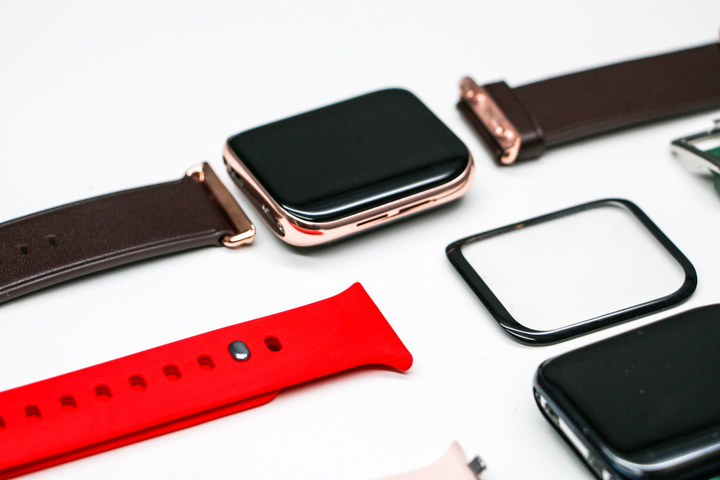
Facing more challenging processes, the cost is naturally rising. It is understood that the cost of the 3D flexible display and glass cover on the OPPO Watch alone has already reached more than $ 30. For comparison, the cost of a Samsung Galaxy S20 Ultra’s BoM analyzed by the disassembly agency Techinsights is only about $ 67.
Customized design is still a choice with a higher threshold after all. OPPO’s choice of refinement can be said to be a pursuit or a sharpening.
The watch can’t be a big battery. How to achieve a long battery life of 21 days?
With the design of the hyperboloid screen, the OPPO team set out to tackle the software challenge.
If on the hardware, OPPO can still use and learn from some mobile phone production experience, then in the field of smart watch systems, OPPO is basically “starting from scratch”.
“We have been developing this system for just 15 months.”
Xu Zheng said a long breath.
Unlike WearOS, which many manufacturers have chosen, this time OPPO chose a completely different path on the system: The team decided to develop a customized version of ColorOS Watch based on Android 8.1, which is equivalent to making a small mobile phone system from scratch.
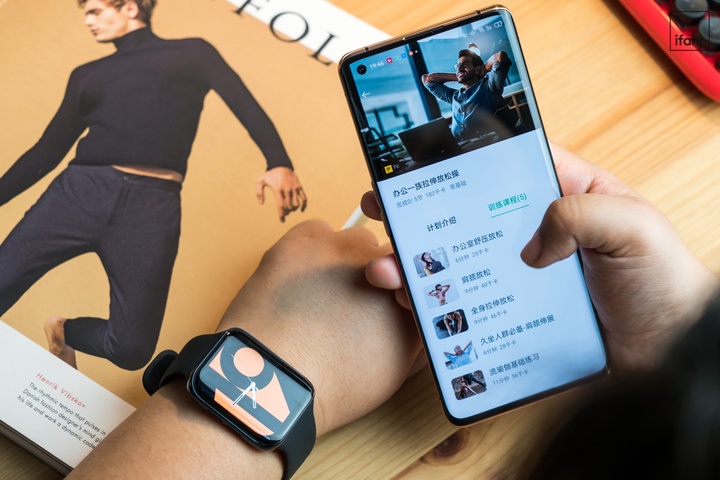
There are many reasons to choose Android. The core purpose is still OPPO hopes to optimize the most commonly used scenarios of smart watches, such as pairing, dial, notifications, and applications, while enabling mobile phones and watches to achieve deeper linkage at the system level.
In addition, the Android bottom layer also brings new development opportunities to the OPPO hardware team. One of the most important is to solve the problem of battery life.
Since the size of smart watches is generally small, it is not possible to use large-capacity lithium batteries, which makes the battery life of most products only last for 1-2 days, and charging before bed has basically become the habit of users.
To some extent, many people still prefer traditional mechanical watches because of dissatisfaction with the life of smart watches.
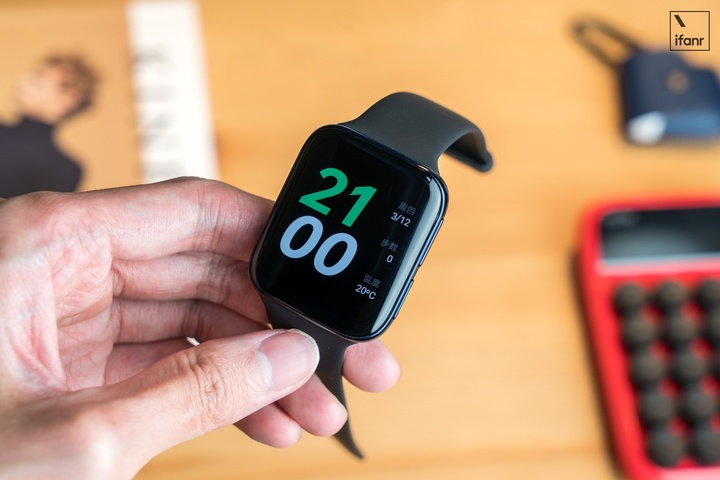
So, do you continue to follow the ideas of the predecessors, or explore your own innovation-at least in terms of battery life, OPPO chose the latter.
On the one hand, OPPO chose to transplant the VOOC flash charging technology to the watch, which can reach 46% of the power in 15 minutes of charging, which can meet most of the day’s use, and it takes only 75 minutes to fully charge.
In addition, OPPO also uses a pulse charging design to allow the watch to adjust the current according to the temperature, prevent the watch body from heating, and take into account the waterproof.
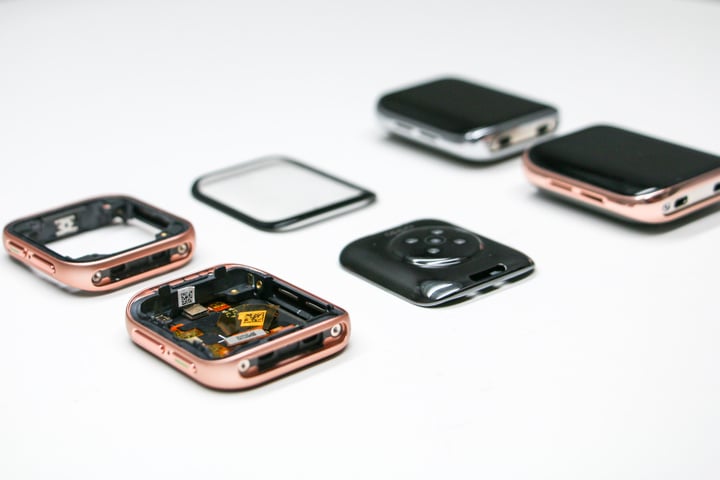
On the other hand, OPPO also integrates two processing chips, Qualcomm Snapdragon and Apollo, into the watch, allowing them to correspond to the two operating mechanisms of “smart mode” and “long battery life mode” to meet high performance and low power consumption. Two needs.
Xu Yi further explained that OPPO wrote a complete system directly in the Apollo chip, which enabled the watch to achieve a long battery life of up to 21 days, and on this basis, users can continue to use notifications, heart rate , NFC, etc.Function, not just looking at time.
“We have inserted two chips into OPPO Watch and then made two systems. They can run independently, or they can interact and synchronize data based on specific scenarios. There are certain technical requirements and a very complex architecture. “
In this dual mode, some users who do not usually exercise well or do not want to bring an extra charger when traveling, can also ensure the basic functions of the watch in the long battery life mode, and completely solve the “endurance anxiety” The problem.
Health and fashion are both important, OPPO wants to make watches better understand users
Similar to the need for image algorithm driving for mobile phone photography, smart watches also require the support of various sports and health algorithms. Whether it is the most basic step count, or calories burned and running, swimming, every arm swing will be recognized by the algorithm, and then converted into corresponding exercise data.
But at the algorithm level, the wearable device industry also has a common problem, that is, many products will directly use the algorithm rules written by the vendor to act directly.
Although this can significantly speed up the research and development progress, it will inevitably lead to homogeneity between products, and the approximate data cannot guarantee accuracy.

Out of the emphasis on algorithms, OPPO finally chose to form an algorithm team to perform the calculations in person.It is based on data collection and models of sports and health algorithms, and is used to optimize the fitness items of OPPO Watch. Xu Yan frankly said that these tasks are very difficult, but they are things that must be involved in making a smart watch.
In addition to self-study, OPPO has not neglected cooperation with related organizations, and has assigned some “professional matters to professional people to do”.
Before the product launch, OPPO reached a cooperation agreement with health applications including Fit, Guru, Meiyou and Snail Sleep, covering core scenarios that are often used by several users such as fitness, menstrual tracking and sleep monitoring.
At the same time, OPPO also received the support of the AI motion algorithm provided by GoMore, the exclusive cooperation of the Institute of Physical Education of the State General Administration of Sport, to provide users with more accurate and convincing fitness guidance suggestions.

Xu Xu told me that many wearable products were too professional in the past, and the distance between the scene and the consumer was far away. This AI algorithm allows users to make fitness plans based on their actual situation, and better Achieve advanced.
After all, not everyone has strict requirements for fitness. Spending tens of minutes every day to exercise muscles and get rid of the compulsory concept of “daily punch” is itself changing the public’s attitude towards fitness. Inherent cognition.
In the interview, Xu Zheng also revealed some OPPO stories in the design of watch dials.
According to him, OPPO specializes in HehaiThe ustwo Malmo studio has collaborated to design some dials for the watch. This studio has previously developed the development of the well-known game “Monument Valley”, which is also in line with OPPO’s design philosophy.

To many people, today’s smart watch is more like a mobile phone accessory or fitness companion, but this cannot hide the need for wearing a watch over the years-looking for a fashion accessory that matches your style.
Today, the “AI Dressing Dial” function you see in OPPO Watch is the function that OPPO has prepared for trendy wearers. As long as you take a picture of your dress with your phone, the system will intelligently generate multiple dials that match the color of your day to meet the preferences of people with obsessive-compulsive disorder.
In addition, OPPO also co-sponsored a stationery design competition called “Everything Can Be Dialed” with Station Cool, introducing more bold and innovative dials. It can be said that OPPO will spend time tossing on the watch dial, and also wants to attract users who value the appearance, and add more “fashion” to the watch.
Serving health is also creating an entrance for the integration of all things
For smart watches, many people want to let it carry more functions than “watching time”.
Some manufacturers want to make a “wrist phone” and try to move the smart phone set to the watch-in addition to making calls and texting, there are various third-party applications , And each type of application can represent an application scenario.
But at least in Xu Yan’s eyes, he believes that the application ecology on watches should be “focused”-instead of stuffing those redundant functions into the dial between square inches, it is better to position a few core scenarios .
This is more like what smartwatches should do today.
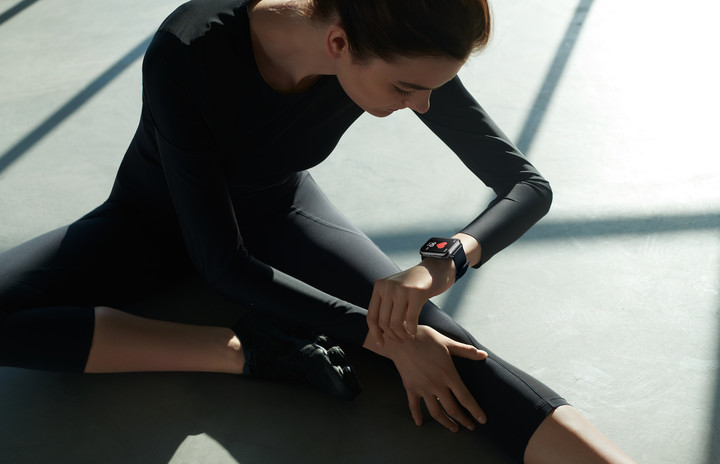
“Smartwatch will not replace mobile phones. It is a brand new smart device. It will cooperate with mobile phones and have their own independent features.”
At present, OPPO chooses to include “health” in a broad sense including sports, and one of the “main circuits” of OPPO Watch. Xu Zheng also believes that in the field of smart wearables, sports health does have an innate development advantage, which is also a major reason why OPPO attaches great importance to the category of smart watches.
“In a sense, we are optimistic about watches and we are optimistic about wearing. The very important reason is that we are doing health, and we also think that health will become a user just in the future.”
In March of this year, market research firm IDC pointed out in a report that China ’s wearable device market will soon exceed 100 million shipments. In addition to the impact of the epidemic, consumers will further focus on their health and Immunity issues, which release more potential needs.
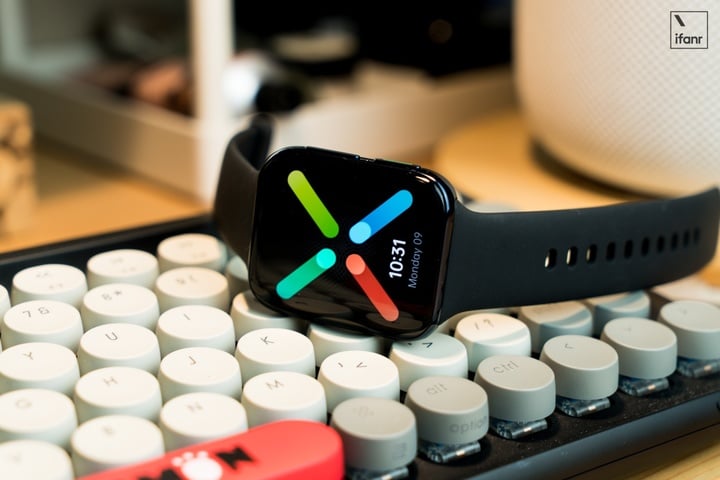
As a hardware form that maintains the closest contact with human skin for a long time, smart watches have always been the best carrier for heart rate, blood pressure and other detection functions. If you look away, smartwatches are likely to develop into a new age health tool, which gives it the opportunity to appear on more people’s wrists.
Only by acquiring the “wrist” of the user, can technology companies have the opportunity to compete for the right to speak of physical data monitoring and even the entire health industry. This is the future that OPPO cares about:
“Imagine that if these data are accurate, complete and sustainable, combined with the ability of AI, everyone can always know their own physical health, and improve, track and assist Treatment. In this case, the wearable device will have a great social significance for the entire human race, and it must also be a stronger part of the smart watch than the mobile phone. “
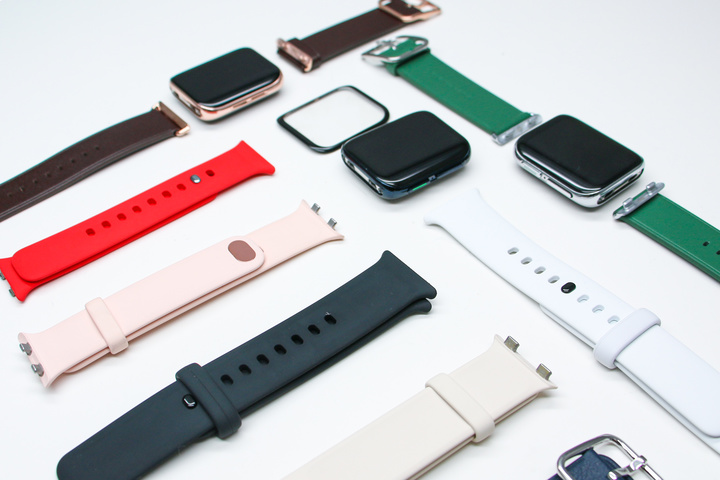
Xu Wei revealed that in the future OPPO Watch will continue to expand services related to sports health, and also plans to build a specialized health platform. These are the first time for OPPO and they are things that need time to accumulate.
He believes that as the platform matures, some new applications and scenarios will be born one after the other. At the same time, watches are also a new starting point for OPPO to achieve “mutual integration of all things.” In the future, it will realize interconnection and interoperability with other OPPO products. To attract users.
“From this year, we feel that the entire smartwatch category will enter the fast track and more giants will enter the market. With the joint efforts of the industry, there will definitely be some killer applications, smart The watch industry will also make a qualitative leap. “
For OPPO, the new journey of smartwatches has just begun.